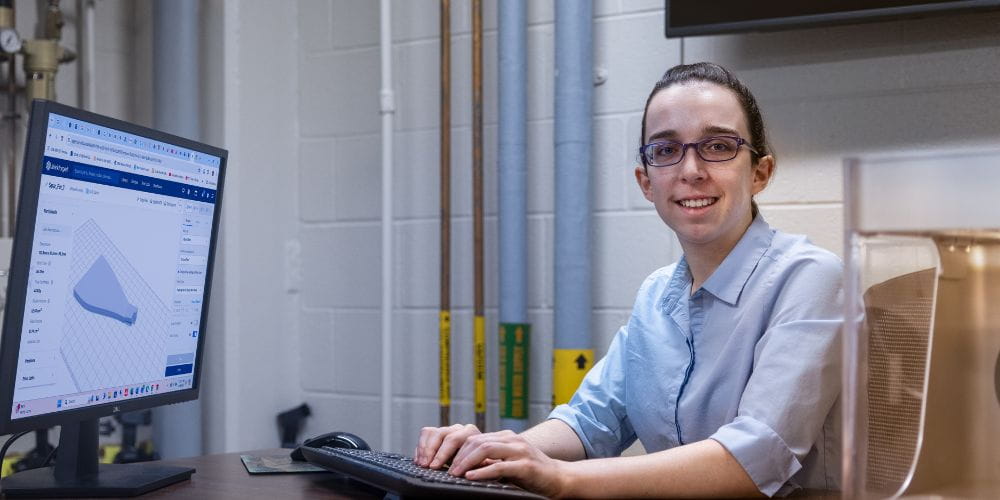UTA doctoral student receives national fellowship

Mikaela Leevy, a graduate student in the Mechanical and Aerospace Engineering Department at The University of Texas at Arlington has been awarded a National Defense Science and Engineering Graduate (NDSEG) Fellowship to pursue her doctoral degree.
The NDSEG Fellowship Program is a competitive fellowship that is awarded to U.S. citizens, U.S. nationals, and U.S. dual citizens who intend to pursue a doctoral degree aligned with Department of Defense focus areas in research and development at a U.S. institution of their choice. Since the program's inception, more than 4,400 fellowships have been awarded from over 70,000 applications received. The Fellowship pays full tuition and required fees for the duration of the fellowship and includes a monthly stipend of $3,600.
“I’m very excited to earn this Fellowship because one reason I want to get my Ph.D. is because I’ve had lots of good professors along the way, and I want to become a professor and teach. The Fellowship will allow me to continue my research and reach that goal,” Leevy said.
Leevy had an internship last summer at the Air Force Research Laboratory, where she worked with UTA Professor in Practice Rob Taylor on aeroelastic scaling of 3D-printed wind tunnel models. Aeroelasticity is the interaction between the aerodynamics forces, inertial forces, and elastic forces experienced by the aircraft during flight.
She is working to build reduced-scale aeroelastic wind tunnel models by optimizing the wing so the reduced scale model structurally responds the same way in the wind tunnel as the full scale flight vehicle. Using 3D printing to create the models is more cost effective than machining the parts and allows Leevy to come up with more designs and try new things so she can decide what she wants to learn from each model and be more iterative.
“What we’re doing differently is that optimization can help us play with different thicknesses of the wing skins and internal structure. With a 3D printer, you can actually build the geometry that you’ve designed. The goal is to continue this research into my doctoral studies and focus on body freedom flutter, specifically with flying-wing aircraft,” Leevy said.
Leevy’s experience at the Air Force Research Laboratory and her research interests are worthy of recognition, according to Taylor.
“The Air Force is very interested in using 3D printing technology to increase efficiency and reduce cost of testing in aircraft design. It is a compliment to Mikaela’s ability and creativity that she has received this Fellowship to help her achieve her research and academic goals,” said Taylor.
— Written by Jeremy Agor, College of Engineering